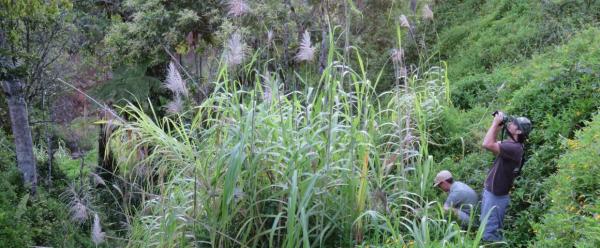Just out 27 October 2025
- Home
- Press area
- Press releases
- The buffalo is the star of a new book
The buffalo, an emblem of sub-Saharan Africa, is the star of a new book
.jpg)
Savannah buffalo from northern Africa (Niger) © D.Cornélis, CIRAD
Certain African legends base their definition of the origin of the world on the one hand on a bovine that chooses a quiet life but one of slavery - the cow - and on the other, one that opts for a hard life but one of freedom - the buffalo.
The African buffalo is sen in different ways by the various peoples living in the sub-Saharan region. While the Pygmy people sees it as inhabited by evil spirits, it is sacred to the Shona; the buffalo's image among the people who live alongside it also changes in time, particularly in the event of food insecurity. Local communities hunt it, and it is a significant part of the diet in some regions. In southern Africa, buffaloes are reared on farms or ranches, and certain specimens are worth more than a million euros. The species is widespread across Africa and found in 37 countries, with a wild population of around 660 000.
Ecology and management of African Buffalo, which is the fruit of work by CIRAD's Alexandre Caron and Daniel Cornélis; Philippe Chardonnet, an expert from the IUCN; and Herbert H. T. Prins from Wageningen University, looks at the biological, ecological, health and socioeconomic factors that shape the lives of African buffaloes. It also includes pointers for their conservation and sustainable management.
A species at the crossroads between societal, economic and environmental issues
At present, most savannah buffalo populations live in protected areas. The African buffalo helps to maintain an ecological balance in the areas it ossupies, notably as a vital food source for lions. It also plays a key role in savannahs by grazing tall grass, which makes access easier for small herbivores.
"Our analysis and synthesis of the survey campaigns conducted recently in Africa suggest that buffalo population levels have stabilized, as a result of substantial conservation efforts over the past twenty years", says Daniel Cornélis, a wildlife ecology researcher who also specializes in natural resource management in tropical and subtropical areas. However, that apparent stability is in fact the result of the concentration of that population in a few well protected zones, masking the marked reduction in the buffalo's natural distribution area.
"The situation for the buffaloes of the northern savannahs is currently very worrying. Buffalo populations in the forests of West Africa are also very sparse, and they are in danger of extinction."
Healthy territories mean healthy buffaloes and humans
For Alexandre Caron, sustainable management of the African buffalo is therefore inextricably linked with sustainable management of the relationship between nature and human societies. While the network of national parks and other protected areas serves to conserve buffalo populations, those populations are isolated from one another.
"Restoring an ecological connection between protected areas calls for territorial management models that reconcile conservation and sustainable use of natural resources and areas, for the greater good of local communities", CIRAD health ecologist Alexandre Caron suggests.
Such models are currently emerging within conservation spheres, offering the buffalo an opportunity to become a key species in these territories. "Buffaloes can contribute to the development of local communities, while reviving local cultures, allowing people to retake possession of a part of their collective imagination." Viable buffalo populations, used sustainably, can therefore provide leverage for healthy territories in which environmental and sustainable development goals can be achieved.
Reference
Caron A, Cornélis D, Chardonnet P, Prins HHT, eds. Ecology and Management of the African Buffalo. Cambridge University Press, 2023. 588 p.
Access the book



























